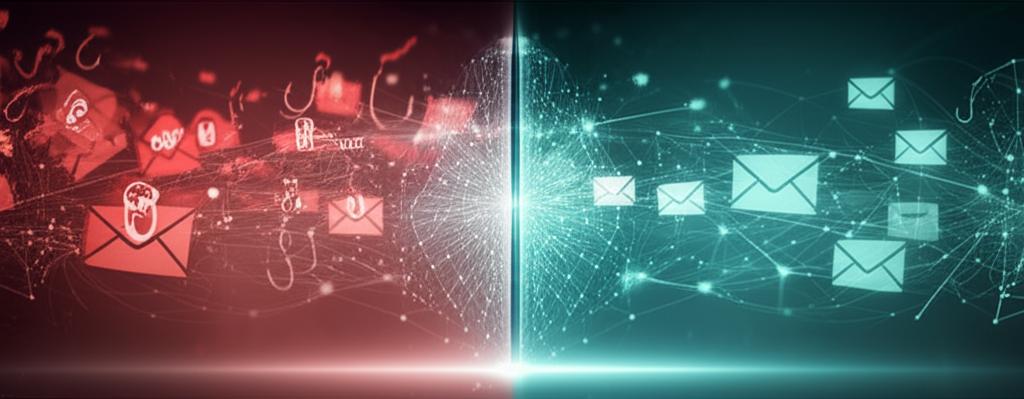Mastering Essential Spam Filtering: Your Ultimate Guide to a Secure Inbox
What is Spam Filtering?
Spam filtering is a critical cybersecurity technology designed to detect and prevent unsolicited, unwanted, and often malicious emails (known as ‘spam’) from reaching a user’s inbox. More than just an annoyance, spam can be a vector for phishing attacks, malware distribution, and other cyber threats. An effective spam filter acts as the first line of defense, safeguarding digital communication channels by identifying and isolating these harmful messages.
The Critical Need for Spam Filtering
In today’s interconnected world, email remains a primary mode of communication for both personal and professional use. However, this ubiquity makes it a prime target for malicious actors. Without robust spam filtering, users would face:
- Overwhelmed Inboxes: Daily influxes of unwanted messages consume valuable time and obscure important communications.
- Increased Security Risks: Spam often carries phishing links, ransomware, viruses, and other malware, posing significant threats to data and systems.
- Loss of Productivity: Sifting through junk mail distracts from core tasks, reducing efficiency for individuals and organizations.
- Reputational Damage: Successful phishing attacks can compromise accounts, leading to data breaches and erosion of trust.
How Spam Filtering Works: A Multi-Layered Defense
Modern spam filtering solutions employ a sophisticated, multi-layered approach, combining various techniques to analyze incoming emails and determine their legitimacy. Here’s a breakdown of the common methods:
Rule-Based Filtering
This is one of the oldest and most straightforward methods. Filters are configured with predefined rules to identify spam. Examples include:
- Keyword Analysis: Blocking emails containing suspicious words or phrases (e.g., “Viagra,” “Nigerian Prince,” excessive exclamation marks).
- Blacklists and Whitelists: Maintaining lists of known spamming IP addresses/domains (blacklists) and trusted senders (whitelists).
- IP Reputation: Blocking emails originating from IP addresses with a history of sending spam.
Heuristic Filtering
Heuristic filtering goes beyond simple rules by assigning a ‘spam score’ to emails based on a wider range of characteristics. It looks for patterns that indicate spam, such as:
- Suspicious email headers or sender information.
- Unusual message formatting (e.g., hidden text, excessive HTML tags).
- Embedded links to known malicious websites.
- Discrepancies between the display name and actual sender email address.
Bayesian Analysis
This method utilizes a statistical approach based on Bayes’ theorem. It ‘learns’ from user input by analyzing the frequency of words in known spam messages versus legitimate emails. Over time, the filter develops a probability model, becoming increasingly accurate at identifying spam based on its word content. The more an email system is trained (marking emails as spam or not spam), the better its Bayesian spam filtering becomes.
Collaborative Filtering (Network-based)
Many advanced spam filters leverage global networks. When a user or system identifies an email as spam, that information is shared across the network. This allows other users to benefit from the collective intelligence, blocking the same spam campaign even if it’s the first time they’ve encountered it.
Sender Policy Framework (SPF), DomainKeys Identified Mail (DKIM), and DMARC
These are email authentication protocols that help verify the sender’s identity, preventing email spoofing and phishing:
- SPF: Verifies that an email comes from an IP address authorized by the domain’s owner.
- DKIM: Uses cryptographic signatures to verify that the email content hasn’t been tampered with in transit.
- DMARC: Builds upon SPF and DKIM, allowing domain owners to specify how to handle emails that fail authentication (e.g., quarantine, reject).
Content Analysis & Machine Learning
Modern spam filtering relies heavily on advanced machine learning (ML) and artificial intelligence (AI). These systems can analyze vast amounts of data, recognize complex patterns, and adapt to new spamming techniques in real-time. This includes:
- Analyzing grammar, syntax, and sentence structure.
- Image analysis to detect hidden text or malicious images.
- Behavioral analysis of sender patterns.
- Deep learning models that can identify highly sophisticated and polymorphic threats.
Key Benefits of Effective Spam Filtering
Implementing robust spam filtering provides numerous advantages:
- Enhanced Security: Protects against phishing, malware, ransomware, and other cyber threats.
- Increased Productivity: Users spend less time dealing with unwanted emails, focusing on core tasks.
- Cleaner Inbox: A clutter-free inbox improves user experience and reduces cognitive load.
- Data Protection: Prevents unauthorized access to sensitive information through email-based attacks.
- Bandwidth and Storage Savings: Reduces the amount of unwanted data transmitted and stored.
Choosing the Right Spam Filter Solution
When selecting a spam filtering solution, consider factors such as:
- Accuracy: High detection rates with minimal false positives (legitimate emails incorrectly flagged).
- Features: Integration with existing email systems, reporting, user controls, outbound email scanning.
- Scalability: Ability to handle growing email volumes.
- Ease of Use: Simple setup and management for administrators and end-users.
- Cost-Effectiveness: Balancing features and performance with budget constraints.
The Future of Spam Filtering: AI and Beyond
As spammers evolve their tactics, spam filtering technologies continue to advance. The future will see even greater reliance on AI and machine learning, with filters becoming more predictive, adaptive, and capable of identifying highly sophisticated, targeted attacks like spear phishing and business email compromise (BEC). Behavioral analysis and advanced threat intelligence will play an even larger role in maintaining a secure digital frontier.
Conclusion
Effective spam filtering is no longer just a convenience; it’s an indispensable component of any robust cybersecurity strategy. By understanding how these powerful systems work and the layers of defense they provide, individuals and organizations can significantly enhance their email security, protect valuable data, and maintain a productive, clutter-free digital environment. Investing in a high-quality spam filter is an investment in digital safety and peace of mind.







